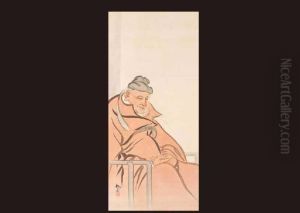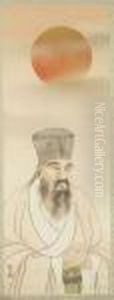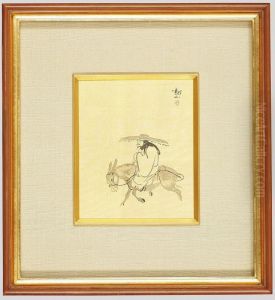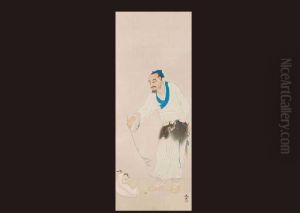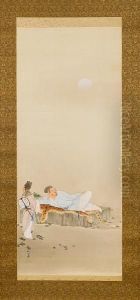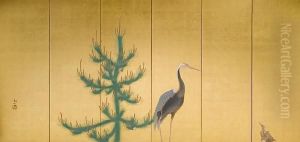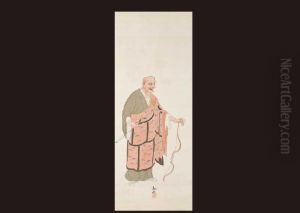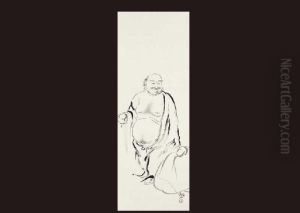Shimomura Kanzan Paintings
Shimomura Kanzan was a Japanese painter born on April 10, 1873, in Wakayama Prefecture. He is renowned for his work in the Nihonga style, a term referring to traditional Japanese painting techniques. Kanzan studied under the esteemed artist Hashimoto Gahō, who was a prominent figure in the Meiji art world. Under Gahō's mentorship, Kanzan honed his skills in the classical Japanese yamato-e painting style, which focuses on Japanese subject matter and often features narrative scenes.
Kanzan's paintings are characterized by their delicate brushwork and use of natural pigments derived from minerals and shells. His works often depict classical themes from Japanese literature and history, with an emphasis on beauty and harmony, which are central tenets of the Nihonga aesthetic. In addition to painting, Kanzan was also involved in the restoration of ancient Japanese artworks, which allowed him to study traditional techniques in-depth.
Throughout his career, Shimomura Kanzan received several accolades and was recognized by the Japanese government. In 1913, he was appointed as an Imperial Household Artist, a prestigious position that involved creating artworks for the Imperial family. He later became a professor at the Tokyo School of Fine Arts, where he influenced a new generation of Nihonga painters.
Kanzan's legacy continues to be celebrated through his contributions to the Nihonga movement and the preservation of Japanese traditional arts. His works are held in numerous collections, including the Tokyo National Museum and the Kyoto National Museum. Shimomura Kanzan passed away on March 10, 1930, leaving behind a body of work that continues to be admired for its beauty and adherence to traditional Japanese artistic principles.
